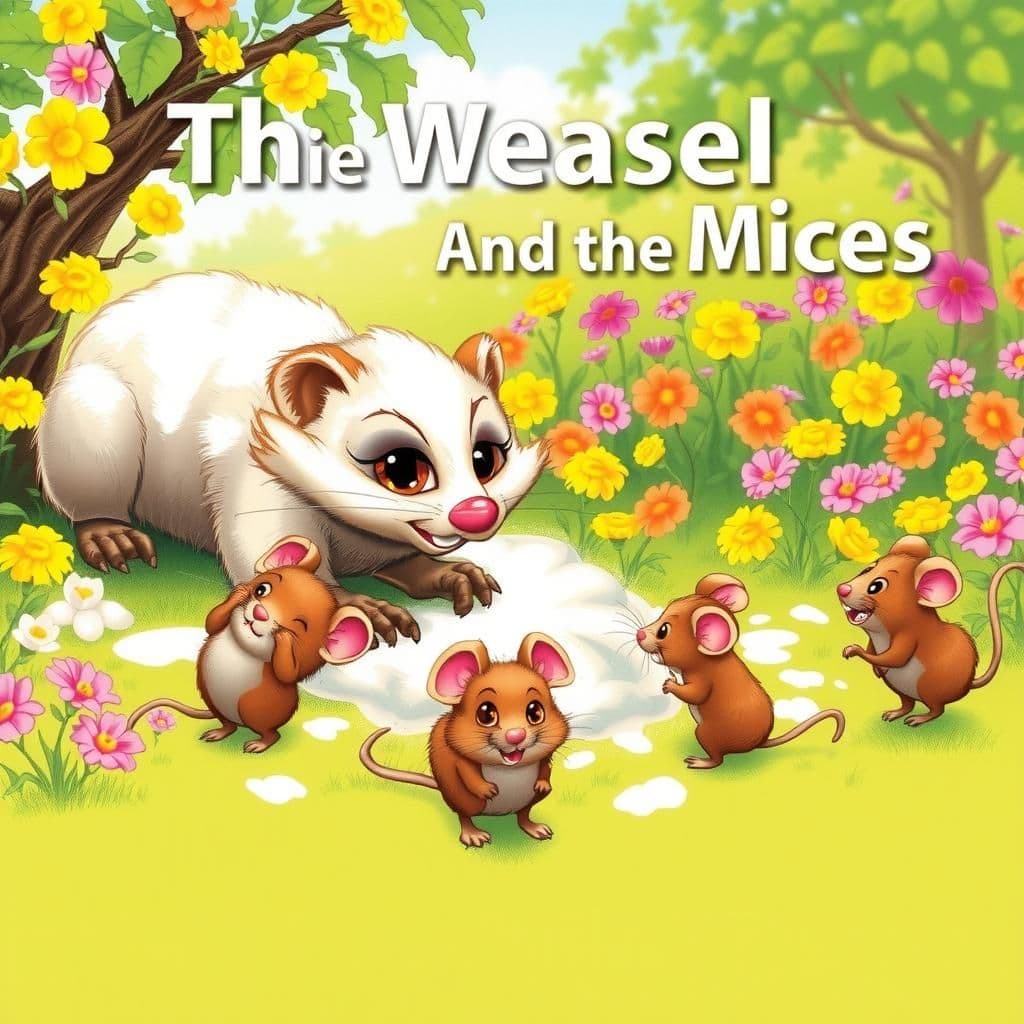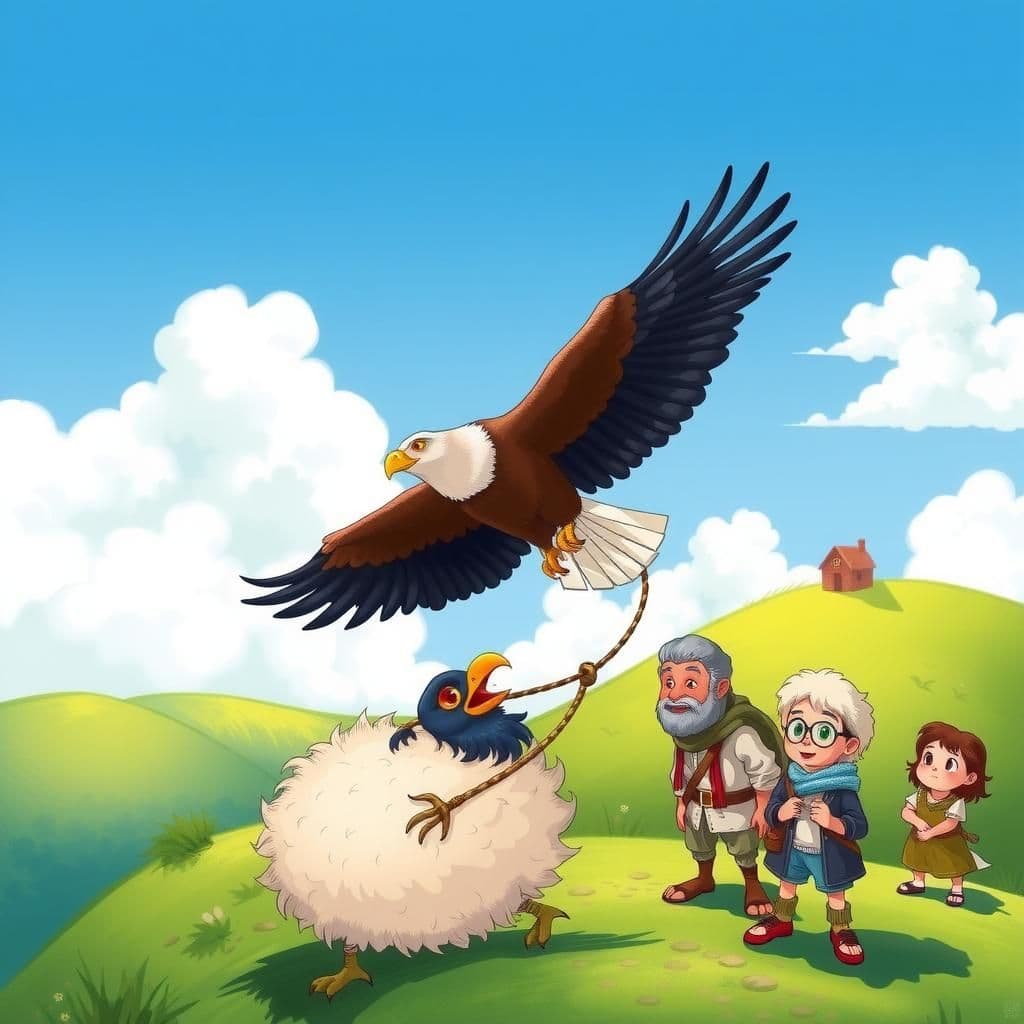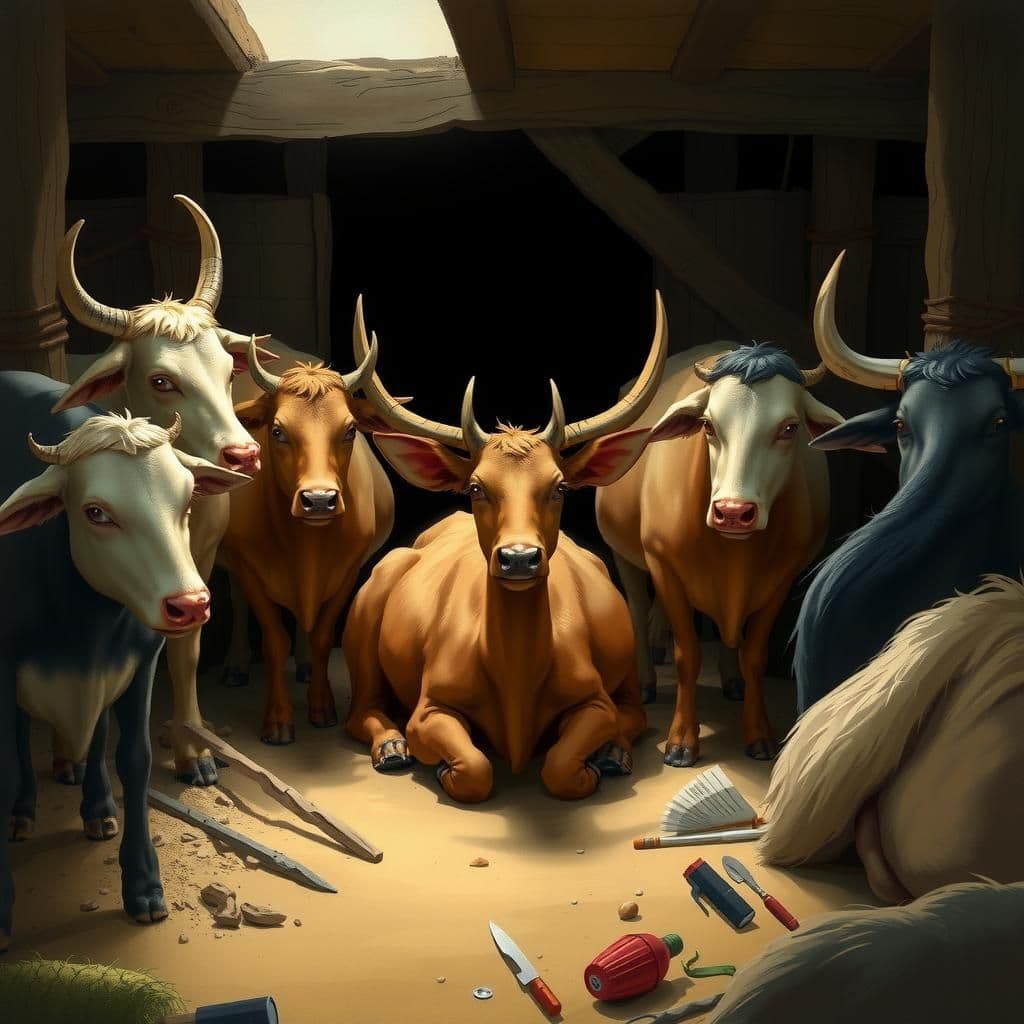The Piglet the Sheep and the Goat

Story Summary
In "The Piglet the Sheep and the Goat," a young pig confined with a goat and a sheep reacts violently when the shepherd attempts to capture him, highlighting a crucial distinction in their fates. While the goat and sheep criticize his cries, he explains that they are only sheared for wool or milk, whereas he faces the threat of losing his life. This educational moral story imparts valuable lessons about understanding different experiences and the inherent value of life, making it a wisdom-packed tale within folklore and moral stories.
Click to reveal the moral of the story
The moral of the story is that the severity of one's suffering may vary greatly from another's, and what seems trivial to one may be life-threatening to another.
Historical Context
This story draws from Aesop's Fables, a collection of moral tales attributed to the ancient Greek storyteller Aesop, believed to have lived in the 6th century BCE. It reflects themes of self-preservation and the differing experiences of individuals in a shared environment, a common motif in fables that often serves to highlight moral lessons about empathy and the nature of suffering. The tale has been retold in various cultures, emphasizing the universal struggle between the oppressors and the oppressed.
Our Editors Opinion
This fable highlights the importance of understanding the context of one's suffering, as not all hardships carry the same weight or consequence. In modern life, individuals may often compare their struggles to those of others without recognizing the differing stakes involved, leading to a lack of empathy. For example, a student might feel overwhelmed by academic pressure, while another might be dealing with a serious family crisis; both face challenges, but the implications of their struggles can differ profoundly, reminding us to approach each situation with sensitivity and understanding.
You May Also Like

The Weasel and the Mice
In this simple short story with moral lessons, an old weasel, unable to catch mice due to his age, disguises himself in flour to deceive unsuspecting prey. As several mice fall victim to his trap, an experienced mouse recognizes the ruse and warns others, wishing that the weasel's deceit is matched by his own success. This meaningful story illustrates the consequences of trickery and the wisdom of those who have survived many dangers.

The Eagle and the Jackdaw
In "The Eagle and the Jackdaw," a Jackdaw, envious of the Eagle's strength, attempts to capture a ram to prove his prowess, only to become ensnared in the fleece. Captured by a shepherd, the Jackdaw learns a valuable lesson: pretending to be something one is not can lead to humiliation. This easy small story imparts a quick moral about the importance of accepting one's true nature rather than envying others.

The Stag in the Ox-Stall
In this short story with moral, a Stag, chased by hounds, hides among oxen in a shed, believing he has found safety. Despite warnings from the Ox about the master’s keen observation, the Stag’s overconfidence leads to his capture when the master discovers him. This animal story with moral teaches the lesson that trusting in false security can lead to one's downfall, emphasizing the importance of being aware of real dangers for personal growth.
Other names for this story
"Life of a Piglet, The Brave Piglet's Tale, Farmyard Friends Unite, The Distressed Piglet, Voices of the Farm, The Piglet's Plea, A Piglet's Struggle, The Goat, Sheep, and Piglet"
Did You Know?
This story highlights the theme of self-preservation and the differing perceptions of danger, emphasizing that what may seem trivial to one may be a matter of life and death for another. It showcases how individuals can react differently to similar situations based on their circumstances and stakes involved.
Subscribe to Daily Stories
Get a new moral story in your inbox every day.